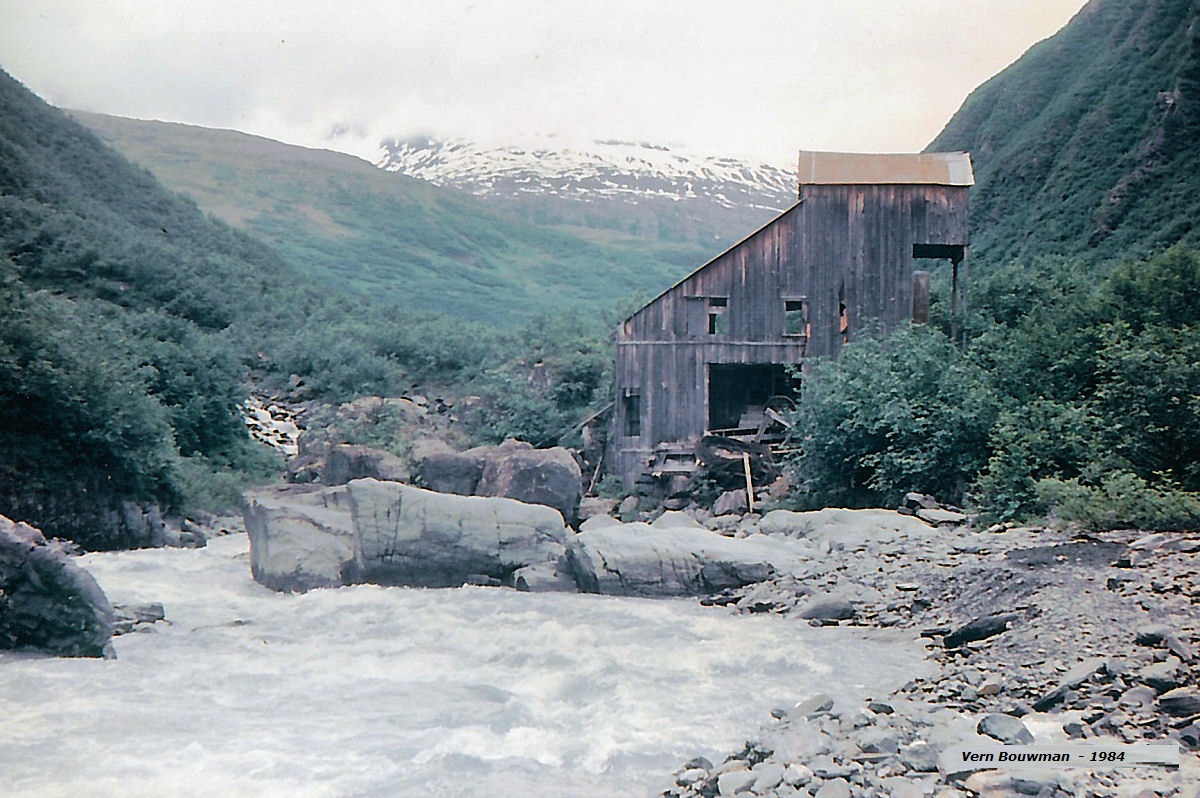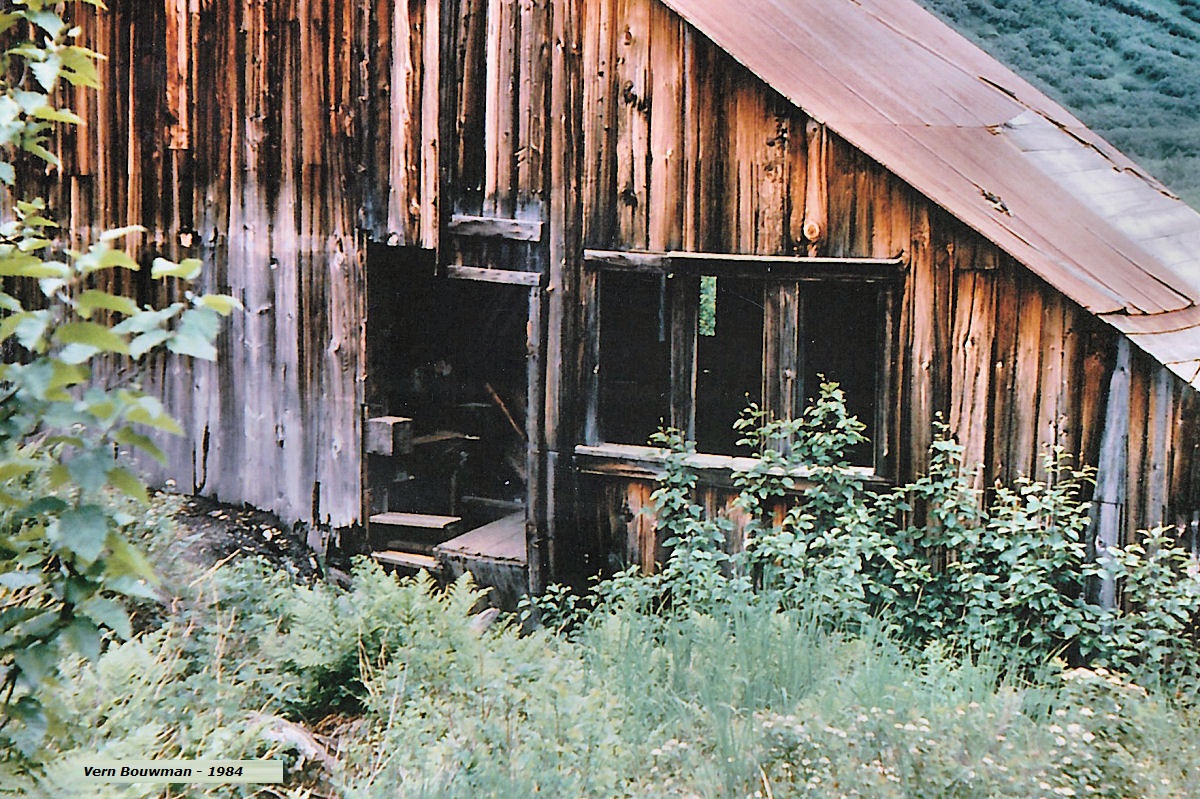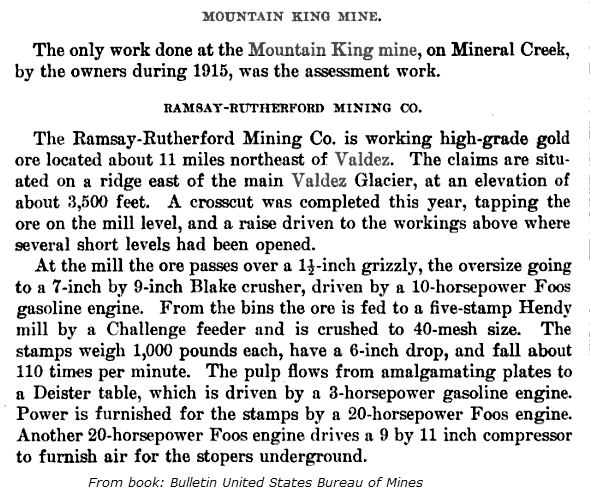MINERAL CREEK VALLEY VALDEZ,
ALASKA
In the summer of 1984, Vern and his
partner drove from Fairbanks where they were working on a city project
to upgrade the underground utilidors.After staying over night at the only motel, they drove the winding dirt road back into the old gold mining hills. They soon came upon this view, the 1913 Stamp Mill used to process gold.  |
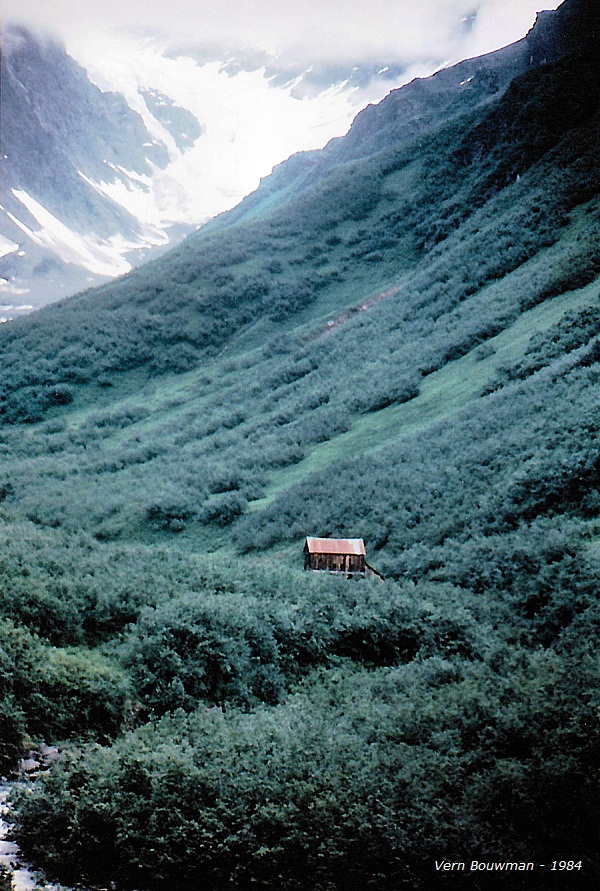 Part
of Valdez's heritage is located 7 miles up beautiful
Mineral Creek Canyon. Established as a result of Gold Fever,
the
same fever that gave birth to the town of Valdez, the Stamp Mill stands
a
tribute to the efforts of early miners to strike it rich. The
Stamp Mill then and now is state owned, but it was built by
W.L. Smith during the summer and winter of 1913. It took a total of two
men to
work the stamp mill at all times. During
its first year of operation, the stamp mill produced 120 tons of ore
and used
only two stamps that weighed a total of 1,200 lbs. |
|
|
|
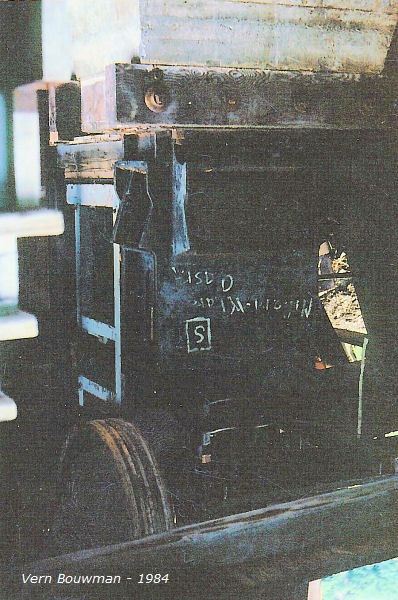 Year 1556 Stamp Mill 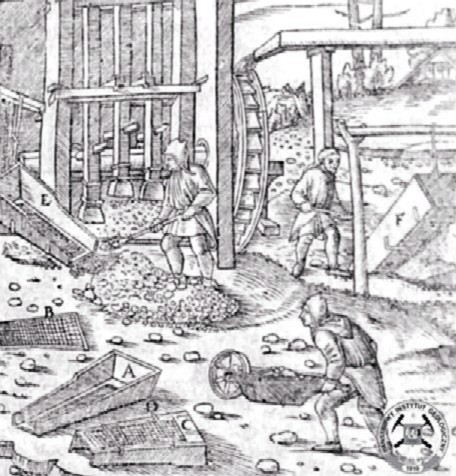 |
The photo (left) is the hammar part
under the main floor. HOW THE STAMP MILL WORKED: Rocks and ore were sent on a car to the crushers. While the rocks were fed under the stamps and being stamped, water was being mixed in. The mixture was then placed on amalgamation plates and the gold was mixed in with mercury. After this step was completed, the mercury was scraped off the plates.Next, a wood fire was built and an iron retrort was placed on the fire. This carried the mercury down a cooling pipe. The mercury was then reused. The gold did not melt very much and it would remain in the retrort. The last step was to send it to the local bank. Mineral Creek Valley is one of the most scenic drives in this area. The rough gravel road begins at the upper end of Mineral Creek Drive and runs for a distance of approximately 5.5 miles before reaching a gate and parking area. With mountains rising to over 5,000 feet and beautiful waterfalls on each side, the scenic vistas can be overwhelming. About halfway up the road, a fork will be reached. The right hand fork leads to the water where a small tram was used years ago to service the McIntosh Road house (1912 era), which was located on the other side of Mineral Creek. The left hand side continues up the valley. The W.L. Smith Stamp Mill is located at the end of the Mineral
Creek Trail. This mill was built in 1913 and used in conjunction with
the Mountain King Mine, which was located about 3,000 feet above sea
level on the east side of Mineral Creek.
|
| Water-powered
stamp mills are illustrated in book 8 of Georg
Agricola's De Re Metallica, published in 1556. The mills Agricola shows
were largely wooden construction, excepting the use of iron shoes on
the end of each stamp. The camshaft was set directly on the axle of the
waterwheel, and stamps were typically arranged in gangs of three, with
each wheel driving one or two gangs. WIKIPEDIA |
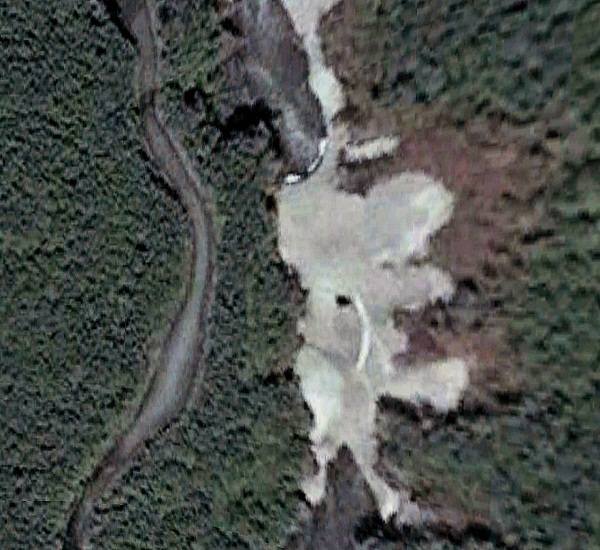 |
